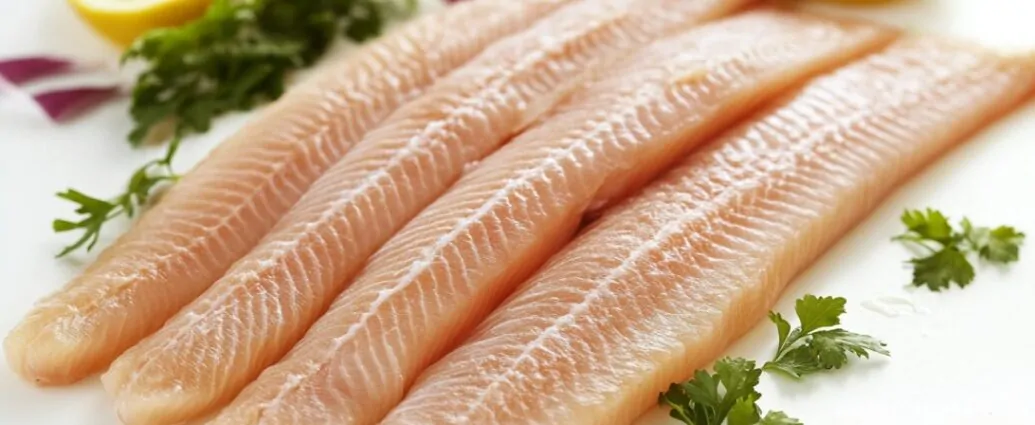Seafood plays a vital role in maintaining a balanced, nutrient-dense diet. Packed with protein, omega-3 fatty acids, and essential minerals, it supports heart health and cognitive function.
However, improper storage or delayed consumption can turn a healthy option into a health hazard.
Eating spoiled seafood can lead to foodborne illnesses like scombroid poisoning or Vibrio infections, which can be severe or even life-threatening. Recognizing spoilage through sensory cues helps prevent unnecessary risk.
Identifying bad seafood without tasting it is a critical skill for every home cook and seafood enthusiast.
Why Seafood Spoils Quickly
Not all proteins are created equal, and seafood proves that in more ways than one. Despite its health benefits, seafood is notoriously perishable.
- Poultry
- Beef
- Pork
Ignoring those conditions can turn a high-quality cut into a source of serious illness.
Several reasons contribute to the accelerated spoilage of seafood.
- Promotes bacterial growth rapidly if not chilled properly.
- Easily broken down by enzymes and bacteria.
- Prone to oxidation, especially in oily species like mackerel and sardines.
- Even brief warmth during transport or storage causes quick decay.
- Even under refrigeration, freshness deteriorates fast, often within days.
Proper handling, immediate refrigeration, and consuming seafood shortly after purchase can help maintain safety and flavor.
But no amount of cooking or seasoning can undo spoilage that’s already begun.

General Sensory Clues for Spoiled Seafood
Spotting bad seafood doesn’t require lab equipment; your nose, eyes, and fingers offer all the tools needed. Before cooking or eating, assess each piece of seafood using three simple sensory indicators.
Smell
Smell is the first and often most accurate way to detect spoilage. Fresh seafood should smell like a sea breeze, clean and lightly briny. Anything else should raise concerns.
- Strong fishy odor that burns the nostrils.
- Sour or rotten scent similar to spoiled milk or garbage.
- Ammonia-like smell is caused by the bacterial breakdown of proteins.
- Any sharp, unpleasant smell indicates the product is no longer safe to eat.
Appearance
Visual cues speak volumes. Before touching or smelling anything, look closely. Color, clarity, and surface conditions reveal a lot about freshness.
- Gray patches, greenish hues, or brown edges.
- Found on whole fish, a clear sign of spoilage.
- On raw or cooked seafood.
Dull or dry appearances signal a loss of freshness. Avoid anything that looks pale or has an unnatural sheen.
Texture
Fresh seafood should spring back when touched. Consistency matters just as much as smell or color.
- A sticky or gooey coating that doesn’t wash off easily.
- A fillet that falls apart or feels like wet tissue.
- Especially on cooked items, it shows the breakdown of structure.
If a touch causes hesitation, discard immediately.
Specific Seafood Indicators
Different types of seafood show spoilage in their ways. Recognizing their specific warning signs can save you a nasty encounter with bacteria or parasites.
Below are individual cues for common categories.
Fish (Fillets & Whole)

Fish require extra scrutiny. Fresh fish, filleted or whole, should be visually appealing and offer a mild aroma. Inspect every part if possible.
- Shiny, vibrant flesh that doesn’t flake apart.
- Bright red gills or bloodlines on fillets or whole fish.
- Clear, slightly bulging eyes on the whole fish.
Spoiled fish may show:
- Cloudy or sunken eyes that lack life.
- Discolored flesh near the edges or belly.
- Slimy or slippery coating.
- Foul, sour, or chemical-like odor.
- Any single one of these should be cause for discarding.
Shellfish (Clams, Oysters, Mussels)

Shellfish are a different game entirely, they must be alive before cooking. Consuming dead shellfish increases the risk of toxins or pathogens.
- Closed shells or those that close when tapped.
- Heavy shells indicate water and moisture retention.
Avoid any shellfish with:
- Open shells that don’t respond to tapping.
- Cracked or chipped exteriors.
- Dry, shriveled interior or foul smell.
Living shellfish will feel dense and show slight movement if agitated.
Crabs & Lobsters

With these crustaceans, timing is everything. Purchase only if alive, as death triggers an immediate breakdown of tissues and rapid spoilage.
- Leg movement or reaction to touch.
- Firm, heavy body with intact shell.
Avoid if:
- Lifeless or limp at the time of purchase.
- No movement at all during handling.
- Dead crabs or lobsters deteriorate in under an hour, even on ice.
Shrimp, Scallops, Lobster Flesh

Raw shellfish flesh should look clean, translucent, and moist. Delicate proteins and fat oxidize quickly, so small details matter.
- Glossy, almost clear appearance.
- Firm texture and mild, sweet aroma.
Signs of spoilage:
- Overpowering odor similar to ammonia.
- Discoloration, such as black spots or white fuzz.
- Sticky or spongy feel when pressed.
Always buy from reputable vendors who keep products cold and well-displayed.
Signs of Spoilage in Cooked Seafood
Cooking doesn’t stop spoilage. In fact, once seafood is cooked, the countdown begins. Bacteria multiply fast on prepared foods, especially in warm or moist environments like containers or improperly cooled leftovers.
- Sour or rancid smell when opened.
- A slimy or greasy film covering the surface.
- Dry or chalky texture, often paired with discoloration.
- Mold spots of any color or size.
Cooked seafood lasts about 1 to 3 days in the fridge. Anything past that carries elevated risks. Always refrigerate within two hours of cooking.

When in Doubt, Throw It Out
Instincts matter. A bad smell, odd texture, or questionable appearance should never be ignored.
Food poisoning caused by seafood can hit hard and fast. Nausea, diarrhea, and vomiting are more severe symptoms that require hospitalization.
- Do not taste seafood to check safety.
- Trust expiration dates, but rely more on your senses.
- Better to lose money than health, discard anything suspicious.
- No seafood dinner is worth a trip to the emergency room.
The Bottom Line
Fresh seafood is a delicious, healthy option if consumed safely. Smell, texture, and appearance reveal most spoilage signs.
An offensive odor, odd coloration, or slimy film provides all the warning needed. No dish is worth the risk of foodborne illness.
Trust sensory instincts to make confident, safe decisions before each seafood meal.



